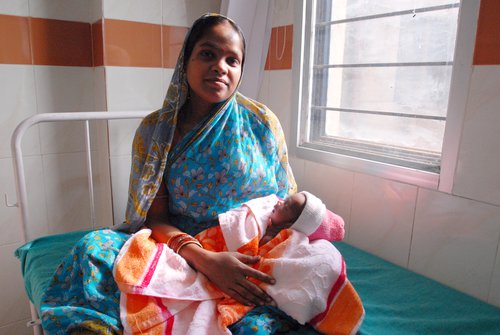By MB

Source: Wikimedia_Commons
Article 2 of the Declaration reaffirms that motherhood is exclusive to females. Only women can become mothers because of their unique biological capacity to gestate and give birth to human offspring. Since men do not have this reproductive capacity, trans-identified males are ineligible to claim the status of motherhood. Likewise, trans-identified females are ineligible to be called “fathers.” The exclusivity of motherhood is what provides women access to various maternal rights and services. These rights include access to medical care during pregnancy, maternal leave, and women-only spaces for breast-feeding.
In India, the Maternity Benefits Act, 1961 provides, among other benefits, the provision of maternity leave and creche facilities to women. Under the Act, only mothers are entitled to visit the children in the creche facility. However, the application of the Act is limited to women working in the organised sector, thus leaving a large number of socio-economically marginalised women outside its scope. The Pradhan Mantri Matru Vandana Yojana, launched in 2017 to reach women in these categories covers only 25% of pregnant women.
Adding to the existing socioeconomic gap, India is now faced with a new problem. The inclusion of males in the category of mother and motherhood has led to the erasure of terminology which refers to female reproductive functions in favour of words like “chestfeeding” (in place of “breastfeeding”) and “pregnant person” (in place of “pregnant woman”). The fight for women’s reproductive rights for Indian women continues to this day. But many Indians have bought entirely into the concept of gender identity. So the words, “mother,” “vagina,” “uterus.” and “menstruation” that are specific to human females have lost all meaning due to individual “feelings.”
Article 2 declares that this erasure constitutes discrimination against women. It calls on States to retain female-specific terminology in laws and services related to motherhood. It also calls for the rightful exclusion of males from being recognised as “mothers,” under the law.
Gender identity has reduced women/ motherhood to “feelings.” But women’s experiences as mothers are shaped by their subordinate role under patriarchy. So motherhood cannot be chosen into and out of based on feelings. But Gauri Sawant, an Indian transgender activist - a trans identified male - who adopted a girl in 2001 and filed a petition in the Supreme Court of India in 2014 for the rights of transgenders to adopt, says this about motherhood: “Motherhood is beyond gender; it is more of a behaviour.” Sawant's adoption wasn’t formally registered under the Hindu Adoptions and Maintenance Act, 1956.
The reality of motherhood for women worldwide is rooted on “sex” and not gender identity. Indian women do not have the right to “self-determination” over their reproductive capacities. Women are coerced to give birth to sons because of entrenched son preference. The sex ratio in India remains skewed as ever with the figure worsening in some states. Females between the ages of 15 to 19 have the greatest risk of abortion-related mortality partly due to poor access to safe abortion. Many Indian women in desperation and dire poverty have to rent their wombs to earn a livelihood.
We cannot address the many needs of women/mothers if we do not use the correct terminology. But women must bow down to men who claim to be “women”, or else be cancelled. The removal of biology-specific terminology for women for the benefit of those who identify as trans or non-binary reveals the inherent misogyny of the gender industry. It tells women that they should opt out of womanhood if they want to get the rights and dignity that they have been denied as women.
The state’s resources are limited. Women are already entitled to pregnancy services and maternity benefits. But the inclusion of men as “mother” - a group incapable of becoming pregnant - would mean that the state has to mobilise its resources and personnel to give these very benefits to men. It is a wasteful utilisation of State funds.
Under patriarchy, women’s bodies have no meaning; we have no boundaries, we are taught to like being violated by men. So the change of language to include trans and non-binary identifying-persons is nothing but further alienation of women from their own selves. Therefore, categorising women as either “non-binary” or “genderqueer” would be redundant as the existing provisions cover them already. In essence, the much-valued inclusion of queer people into “motherhood” comes at a cost - and this cost is to the detriment of women.
The revised estimate (INR 1300 crore or 174.4 million USD) for Pradhan Mantri Matru Vandana Yojana scheme this fiscal year is half of the amount allocated (INR 2500 crore or 335.4 million USD) in 2020-21. That is why the State’s limited resources should be devoted to providing effective services and support to as many women as possible, who, unlike someone’s “feelings,” exist in flesh and blood.